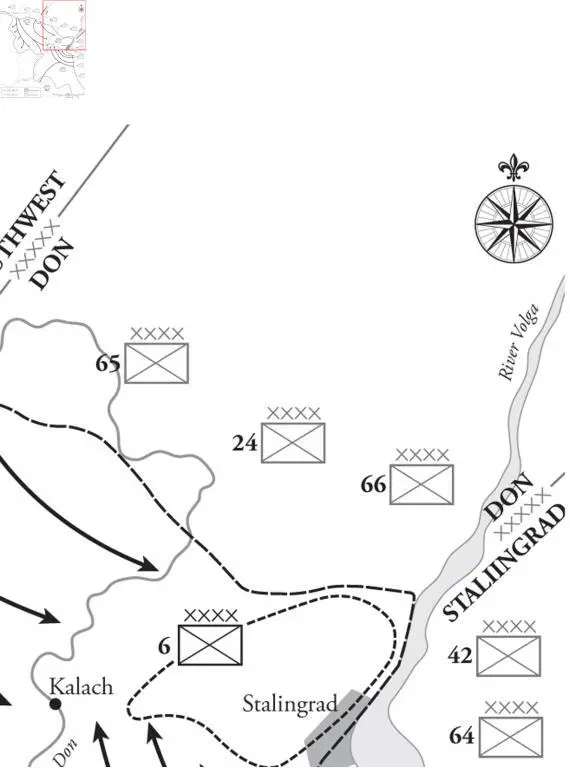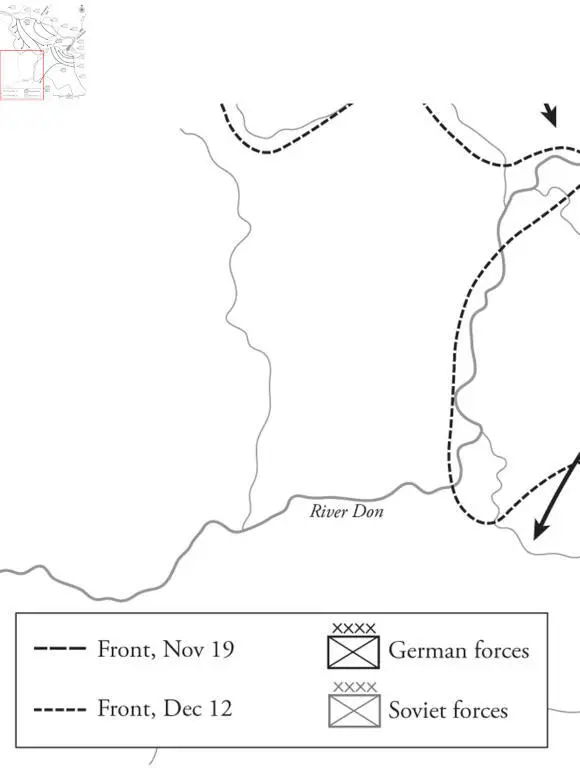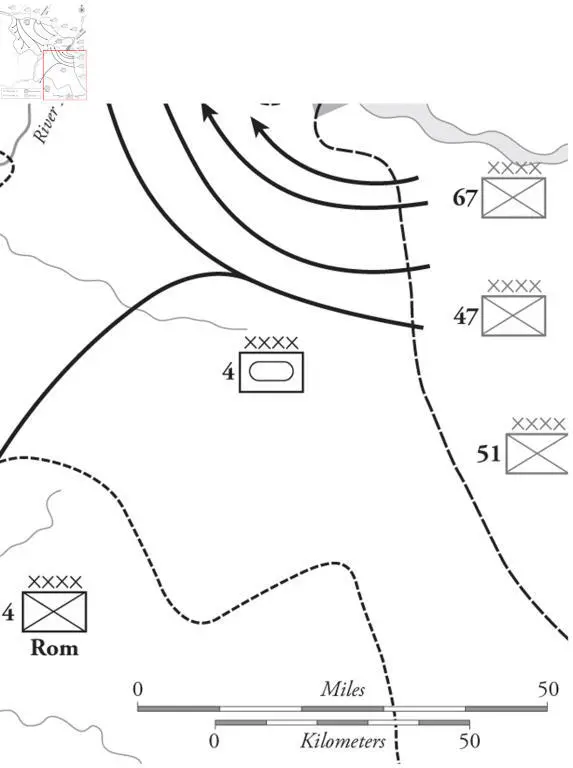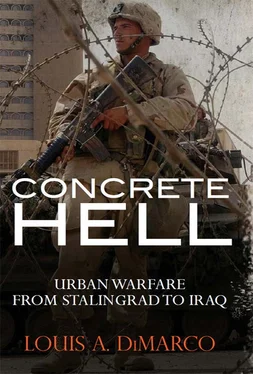One of the major special tactics that the Russians developed and utilized in the Stalingrad battle was snipers. Though the Red Army had a small number of trained snipers as part of its organizational structure, in Stalingrad the employment of snipers became a largely ad-hoc movement initiated by individual soldiers and eventually embraced and encouraged by commanders. Early during the battle self-motivated snipers acquired rifles with telescopic sights and then got permission from their commanders to go on individual “hunting” missions. Red Army commanders, including the army commander General Chuikov, saw the snipers as brave and angry soldiers whose frustration and hatred could be channeled by the army into a useful outlet. Thus, sniping became a sanctioned individual mission and the success of snipers was widely publicized both within Stalingrad and throughout the Soviet Union to encourage morale among the soldiers at the front and the civilians at home. Sniping was inordinately successful in Stalingrad for many reasons: the density of troops in the built-up area; the protracted nature of the battle, which led to troops becoming careless, and allowed snipers to learn the patterns of the enemy; the terrain, which allowed snipers to stalk and hunt targets with both cover and concealment; and the proximity of the enemy, which made effective sniping relatively easy — many targets were less than a hundred yards away. The Russian command carefully tracked the progress of individual snipers and trumpeted their success in propaganda. The most famous of the snipers, Private Vasily Zaitsev, had well over 200 sniping kills, and was one of several snipers who killed more than a hundred Germans. The effectiveness of the Russian snipers was not only a major morale booster to the Sixty-Second Army, it had tremendous adverse psychological effects on the German troops who never knew when a shot would crack and a man would drop to the ground.
Map 2.3 The Soviet Counteroffensive, November 1942




Armor, for both the Soviets and the Germans, proved to be extremely important to successful city fighting. Soviet armor was primarily used in stationary firing positions. Though stationary, the armored vehicles were heavily camouflaged and carefully sited to cover avenues that the attacking Germans could not avoid. Unlike antitank guns and machine-gun positions manned by infantry, the stationary tanks were immune to all but a direct hit by artillery and often required an enemy tank or assault gun to knock them out. They were important anchors in the Russian defensive scheme. German tanks were equally invaluable. They provided the firepower and shock action necessary for German infantry to overpower skillfully defended Russian defensive positions — particularly bunkers and dug-in Soviet tanks. Their firepower made up for the relatively low numbers of infantry in the German force. They provided an important psychological advantage that boosted German infantry morale and intimidated defending Soviet infantry. Finally, their mobility meant they could be rapidly repositioned to weight a particular sector or exploit success. It was no coincidence that the major successes achieved by the Germans in their four major attacks in the interior of Stalingrad included major components of German armor. Rather than having a limited role in urban operations, Stalingrad demonstrated that armored forces were key and essential to successful urban operations.
The battle for Stalingrad was simultaneously a tribute to Soviet army skill and endurance, and an example of the incompetence of German senior leaders. German commanders executed Operation Blue poorly. A large factor in that poor execution was the inept strategic and operational guidance and orders of Adolf Hitler. Several senior officers were removed from their positions because of their conflicts with Hitler. Among these were the chief of the Army General Staff, General Franz Haider, and the commander of Army Group B, General Fedor von Bock. In both cases it was directly due to Hitler’s refusal to act in accordance with a real appraisal of the battlefield. Hitler personally took command of Army Group South and gave very specific operational and tactical guidance down to battalion level through much of the battle. He made the key flawed decisions to launch operations into the Caucasus before the Volga line was secure; to elevate Stalingrad from a secondary campaign objective to a primary campaign objective; to require all of Stalingrad be captured not just controlled; and to hold fast as the Sixth Army was surrounded and later not to break out when the 6th Panzer Division and Field Marshal Erich von Manstein’s Army Group Don was only 20 miles away. It is doubtful that any army could recover at the tactical level from the terrible position the Sixth Army ended up in as a result of Hitler’s amateurish involvement in operations. However Hitler did not single-handedly set up the conditions for the Stalingrad defeat. Collectively the senior German military was also guilty of incompetence for ignoring the weaknesses of the allied armies protecting Sixth Army’s flanks; not understanding the limited capabilities and strength of XLVIII Panzer Corps, the Army Group reserve; and completely underestimating the Soviet military’s competence, strength, and intentions prior to the launching of Operation Uranus. It was the sum of the failures of Hitler and other senior leaders that led to the debacle at Stalingrad. The great lesson of Stalingrad is that urban warfare, for all of its painful brutality at the tactical level, is often won or lost due to operational and strategic decisions made at levels above the tactical and often immune to the conditions of the concrete hell of urban warfare.
CHAPTER 3
AMERICAN URBAN WARFARE
Aachen, 1944
Eighteen months after Stalingrad, on the opposite side of the European continent, the US Army was tested in major urban combat of when the Americans approached the German city of Aachen in October 1944. The battle for Aachen demonstrated many of the characteristics of urban warfare seen at Stalingrad. It also highlighted some of the basic requirements of successful urban operations that were missing in the Stalingrad battle. Finally, Aachen demonstrated some uniquely American characteristics of urban operations. Though not conducted on the same scale as Stalingrad, the battle for Aachen was nonetheless one of the key battles on the Western Front of World War II as the Allies sought, and the Germans contested, the capture of the first German city of the war.
Drive to the German Border
The Western Allies opened the Western European Front on June 6, 1944, when troops were landed at Normandy. For the next seven weeks German and Allied forces dueled in the hedgerows of Normandy. The terrain suited the German defense and the Allies were continuously frustrated in their attempts to break out of their beachheads. Finally, on July 25 the American First Army’s Operation Cobra succeeded in breaking out of the beachhead. In the next weeks a battle of maneuver ensued. A German panzer counterattack was defeated at Mortain, August 7–13, 1944. Meanwhile, the Americans activated General George Patton’s Third Army which quickly captured the Brittany Peninsula, turned east, and dashed through light resistance across central France.
Читать дальше
















